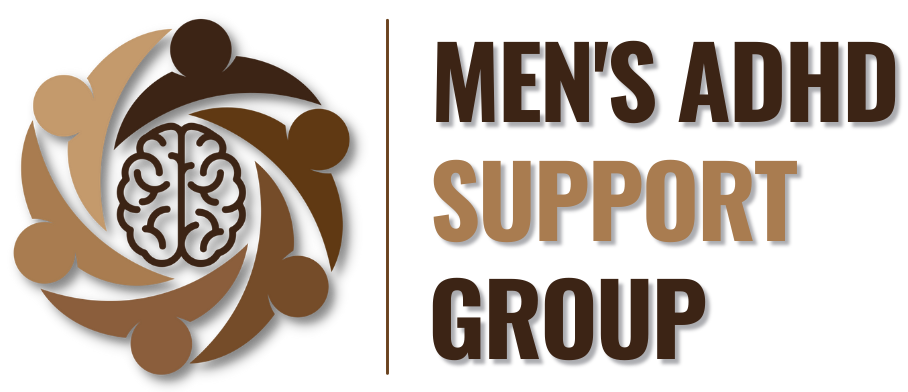Redefining Journaling When You Have ADHD
You’re staring at that journal you bought—probably the third or fourth one by now. Your pen hovers over the page, and... nothing. Your mind goes blank. What the hell do you even write?
You see the missed days, the gaps, and feel that frustration bubbling up again. Another thing you didn’t follow through on, right? I mean, everyone says journaling is supposed to be this daily habit that helps you manage your ADHD. But how? How do we journal when consistency feels impossible?
Let’s clear this up. Journaling can be one of the most powerful tools for managing ADHD, but it doesn’t have to be this long, drawn-out daily diary. The idea that journaling has to be done every day? That’s a myth. Another myth is that there is only one way to journal and that it should be perfect. Journaling is subjective. It’s about finding a way to capture your thoughts, struggles, and even your wins in a way that works for you, and that’s different for everyone.
How Do We Journal?
At its core, journaling is about creating a clear picture of your mental landscape. And here’s a big tip: journaling doesn’t have to be written. You can do short videos, draw something that reflects your mood, or even use song lyrics. The method is yours to choose.
So, what do you use it for? If anxiety is your thing, jot down what triggered it, how you responded, and whether it lingered or subsided. Tracking this over time reveals patterns and helps you (and your therapist) better understand your triggers.
Struggling with emotional dysregulation, impulsivity, or relationship issues? Journaling can be a record of your reactions. For example, if impulsive spending is your Achilles’ heel, write down when the urge hit, what was happening before, and how you handled it. This info is golden for your therapist.
But don’t forget to record the good stuff too—what you're thankful for, what made you feel accomplished. Gratitude is something we often skip, but it’s key to reframing our minds away from the failures we tend to fixate on.
Journaling for Therapy: Your Secret Weapon
What do you do with all this information? We gave some examples of how to use it above, but right now, let’s focus on a specific use case. In this case, therapy. This is one of the biggest struggles that we have when it comes to managing ADHD. Therapy is supposed to be a key component to managing ADHD. However we often struggle with therapy. I mean, how many times have you gone into therapy with a blank mind, knowing you have stuff to talk about but unable to remember a damn thing? That’s ADHD in action.
This is where a therapy journal comes in. It’s not just a place to dump thoughts randomly—it’s a tool to walk into therapy with a plan. Instead of wasting time trying to remember what you wanted to talk about, you’ve got it all laid out: three or four key things to address. It’s like a map, guiding your therapy session and making sure you’re focusing on what matters most.
How to Use a Therapy Journal
Before your session: Spend a few minutes writing down what’s been bothering you. Emotional regulation issues? Impulsive spending rearing its head? Get it on paper (or record it on your phone). You can even send this to your therapist beforehand.
During the session: Focus on the most recent issues. Often, these short-term problems will uncover deeper, long-term struggles. By starting with what's pressing, you can get to the root cause quicker.
After the session: Reflect on what you discussed. What strategies did your therapist suggest? What’s your homework for the week? This is crucial because our ADHD brains love to forget the second we walk out the door. Writing it down keeps you accountable.
Tailor Your Journal to Your Needs
Remember, journaling is subjective. There’s no one right way to do it, especially with ADHD. Maybe you like bullet points. Maybe you prefer a workbook-style journal. Maybe audio or video works better for you. It doesn’t matter—as long as it works for you.
The above is just an example of how to use it. There’s hundreds of different ways to journal, and many different things that you can journal. It can be a gratitude journal, an anxiety brain dump, a task list, an exercise and sleep tracker. What’s important is to make it yours.
Journaling as a Tool for Personal Growth
At the end of the day, journaling helps you take control. Keep it simple at first, you can work up the complexity as you identify what you need.But keeping it simple at first can allow you to develop the habit. Remember, what you record in it is for you to decide. It’s not about perfection, it’s about persistence.
Shane Thrapp is a Certified ADHD Life, Relationship, and Career Coach, and the Operations Director for our nonprofit.
Through his business, Creating Order From Chaos, he has helped hundreds of people find their paths through the chaos of life with ADHD and find their order and purpose.
He is also the Operations Director for our nonprofit Men’s ADHD Support Group and a public speaker who works to be a voice in advocacy for adult ADHD awareness.
If you want to help support our efforts, then please consider donating or volunteering so that we can keep Inspiring, Educating, and Empowering men to thrive with their ADHD.

